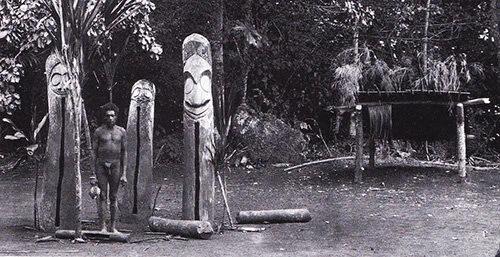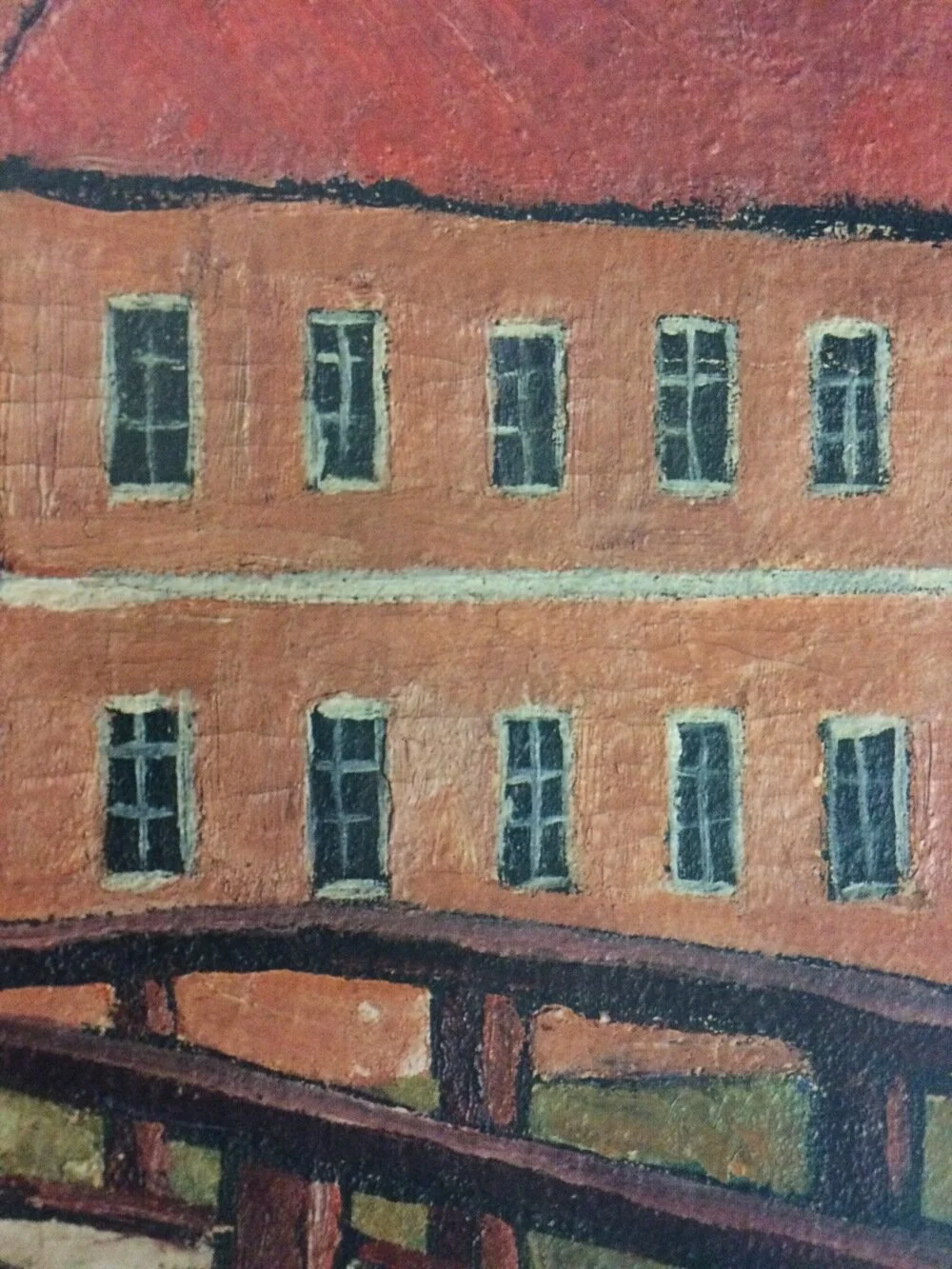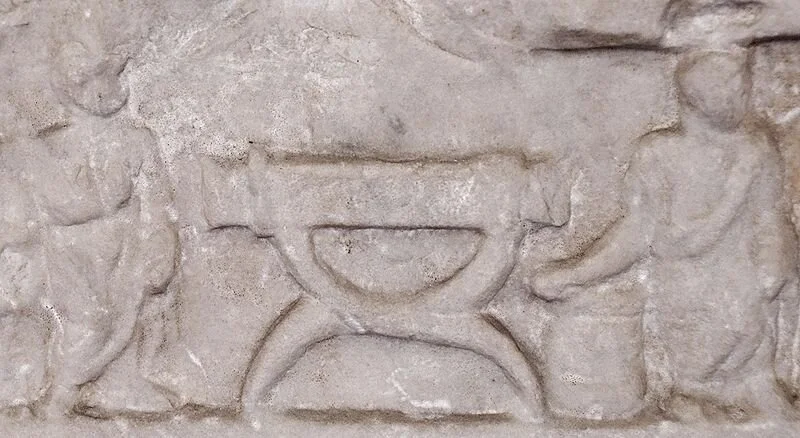VAO CONCEPTS
VAO / one of the small islands off the northeastern coast of Malekula in the archipelago of the New Hebrides, which were renamed Vanuatu in 1980.
EXEGETICAL ELEGANCE WILL NOT BE SACRIFICED
Inevitably any study of Vao must rely heavily on the one major monograph about it - Stone Men of Malekula (1942). Although this ocntains a very large amount of information about Vao, it is obviously incomplete, since Layard spent only three weeks on the island, and while there was not sure what aims he was trying to achieve in his field work.
So the following analysis is characterized by provisionally and, at times, a paucity of material. In this sense, it is very different from Layard's. While admitting a lack of knowledge in certain areas, Layard regards many of his interpretations as "conclusive" and in other cases offers "ample proof." But certainty is unobtainable in social anthropology when dealing with ethnographic investigations. The quality of such an investigation is relative to the amount of information available. From this information, some kind of concrete logic is often induced, and this serves as an explanatory model of guiding the reader through the ethnography. However, any postulation of a concrete logic is precisely that, an assumption or working hypothesis that will be modified, or not, according to the factual material available.
TA-GHAR
Appears under two aspects:
(A) As a mythical hero arriving in a canoe, whence he distributes foodstuffs and pigs together with instructions about how to rear the pigs, and then sails away, taking a woman with him.
(B) As a deity with the following attributes:
1. Is creator of all man and things.
2. Lives in the moon, where his image may be recognized in the dark areas we call "the man in the moon."
3. Begets all human children by the moon...whence, when ready, the children fall into their mothers' wombs, which are the portal through which they come top the light of day.
4. Lights up the moon.
5. Secondarily, and by analogy, as luminary, associated with the sun and to a lesser extent with the stars, and, by yet further analogy, with the clouds and the wind.
6. Through his association with the sun makes trees and plants grow; but has no control over the weather.
7. Is definitely not a ghost (ta-mat), though like one in respect of the fact that he has no body.
8. Is the object of no cult or supplication, but is accepted as in all ways good.
Above all, Ta-ghar is light. Both the warmth of day and esoteric. He is predestinator, deciding how long people will live and when and how they will die, he is a guardian deciding punishments in this life, he is the founder of the "perfect" system of social organization.
[The Vao term for white men in general is "To-hal-hal" = those who float, those who travel and live in ships. ]
TA-MAT
soul - spirit - ghost - dead man
Ta-mat is capable of degrees. Through sacrifice both pigs and men accumulate it and thus grades. The sacrifice of a tusked boar permits a transference of the boar's ta-mat to either another pig or a man if the recipient is of a lower grade than the boar. By gaining the maximum amount of Ta-mat one can become a Ta-ghar on earth - one is unworldly, but still in the world.
Ta-mat appears to be linked with prestige and ancestral power. There are no chiefs on Vao, but, in an otherwise democratic organization, there is in each village always one dominant family that also happens to be the wealthiest in pigs.
Incision rituals - a kind of self-sacrifice which involves taking in the psychic powers of the ancestors.
PROHIBITIONS
Abstaining from eating certain kinds of yams during the period of mourning for a young man
the sacred / sacredness is marked by the acquisition of a new name / everything in the Vao world, rather animate or inanimate, is said to possess a name / "only, we do not always know what it is"
MAN
This is a category with an extremely wide extension. It embraces powers that are used for both magical and medicinal purposes. Everyone on Vao, regardless of sex, is acquainted with "man" in some form, which they are able to perform. The structure of every rite contains the four main elements:
abstinence and fasting and observance of certain prohibitions
the concrete medium such as a stone together with ritual actions
a song or incantaton
a muttered prayer
Also, the number four - things being done in fours
COLOR
The memel tree is a very tall one on Vao. It has high branches, throwing down lianas on which grow the memel fruit. This fruit is large and red and, of its kind, is unique on Vao. Ta-ghar mythically caused on of these fruits to fall. It split into two parts, which turned into the first man and woman on Vao / The erythina tree's red flowers blossom after it has shed its leaves. This exceptional behavior is very noticeable, being highlighted by the background of the green, dense brush. The flowering proclaims the approach of the intensive calculations leading to the important decision as to which of the two moons - October or November - is the one in which the dead are expected to make their annual return into the land of the living.
The only other use of red that appears to be at all symbolically important is the painting of a bride's face vermillion just before she begins the procession to her husband's house. The path leading to his house is decorated with an array of yam poles, which are garlanded with dark red amaranthus flowers.
MEGALITHIC RITUAL
The general term for stone is "vet." The most important uses of stone are for the the construction of the dolmens and the stone platforms in rituals. It is on one of these that the major individual Maki sacrifices are performed. The ta-mat of the ancestors who have previously performed Maki inhabit, or hover near, these monoliths.
The connection between the stone and the ancestors:
Any natural stone or coral of unusually large size or interesting appearance is believed to be the dwelling place or even the petrified personification of some mythical hero
STONE IS OFTEN THOUGHT OF AS ANIMATE
Much I have excerpted from various sources.
Please note that I do not own the copyright to most of the texts, images, or videos.




